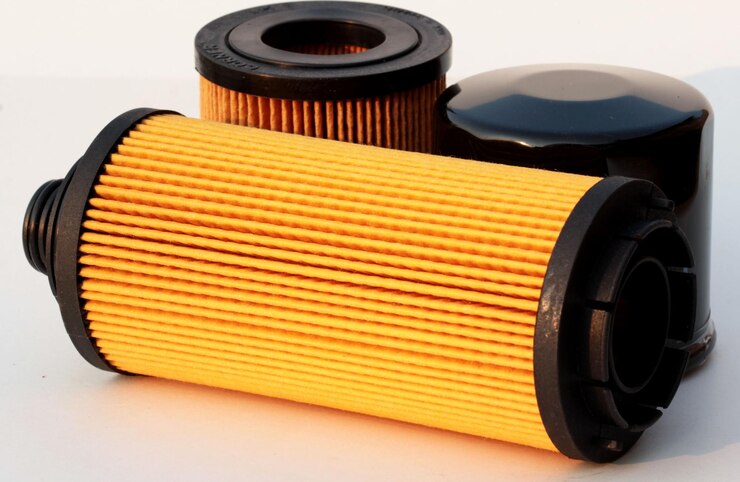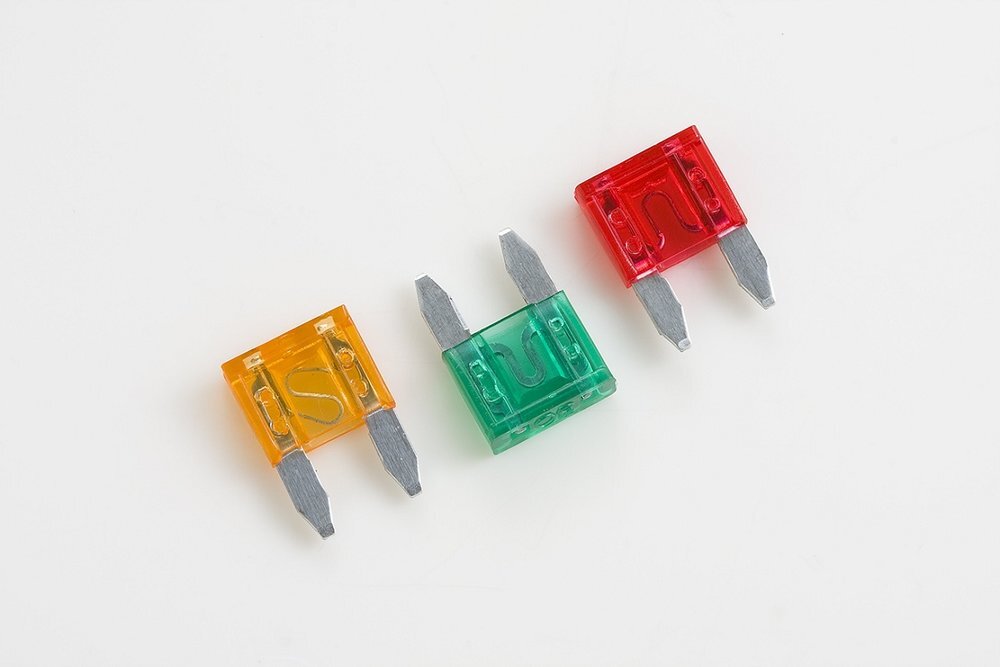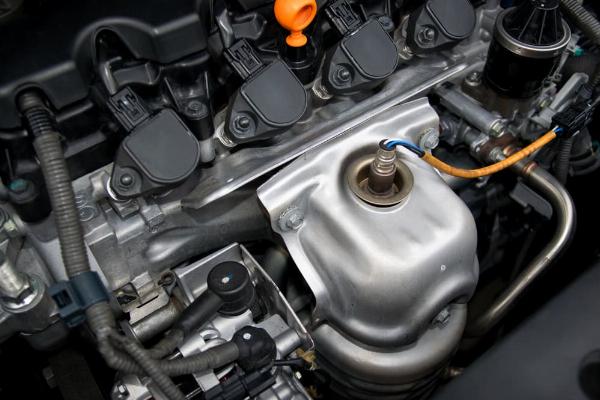 Competitor Backlink Hack – Steal Their Traffic. Legally!
Competitor Backlink Hack – Steal Their Traffic. Legally!
Automotive Composites Market: The Future of Lightweight and Sustainable Vehicles
Written by Gauri Ghogale » Updated on: November 19th, 2024

The Automotive Composites Market is at the forefront of innovation, with advancements in technology driving the development of faster, safer, and more sustainable vehicles. One key area of growth in this industry is the use of automotive composites. Composites are materials made by combining two or more constituent elements, each with different properties, to create a material with enhanced characteristics like strength, durability, and reduced weight.
This blog will explore the world of automotive composites, focusing on their market size, growth projections, key players, types, and applications. We'll also dive into why composites are becoming a game changer for the future of automotive manufacturing, especially in the context of sustainability and performance.
What Are Automotive Composites?
Automotive composites are materials used in vehicles to improve performance while reducing weight. They are primarily made by combining fibers such as carbon or glass with a resin matrix. The result is a material that is both lightweight and exceptionally strong, making it ideal for the automotive sector, where fuel efficiency and emissions reduction are top priorities.
Traditional materials like steel and aluminum have been widely used in car manufacturing. However, automotive composites provide better performance, including:
- Lightweight properties: Reduced weight leads to better fuel efficiency.
- Increased strength: Despite their lighter weight, composites offer excellent strength and rigidity.
- Corrosion resistance: Unlike metals, composites don’t rust or corrode.
- Design flexibility: Composites can be molded into complex shapes, making them suitable for modern car designs.
Market Overview
The automotive composites market is on a rapid growth trajectory. According to the data, the global market size for automotive composites was valued at $32.70 billion in 2023. The demand for these materials is set to rise sharply, with projections indicating that the market size will reach $38.95 billion in 2024 and $132.40 billion by 2030. This represents an impressive Compound Annual Growth Rate (CAGR) of 19.10% during the forecast period from 2024 to 2030.
Why the Sudden Growth?
The rise in demand for automotive composites is driven by several key factors:
1. Fuel Efficiency and Emission Standards: Governments around the world are enforcing stricter fuel efficiency and emission regulations. Reducing the weight of vehicles is one of the most effective ways to achieve these standards, and automotive composites offer an ideal solution.
2. Electric Vehicles (EVs): As the EV market grows, manufacturers are focusing on making these vehicles lighter to improve their range. Composites play a critical role in reducing the weight of EVs, thereby extending battery life and enhancing performance.
3. Sustainability: Composites are also seen as a more environmentally friendly alternative to traditional materials like steel. Their durability and reduced weight contribute to lower emissions during the vehicle's lifespan.
Key Market Players
Several companies are leading the charge in the automotive composites sector, driving innovation and expanding the applications of these materials. Some of the prominent players include:
- ACP Composites
- Clear Water Composites
- Cytec Solvay Group
- DowAksa
- Hexceloration
- HITCO Carbon Composites
- Johns Manvilleoration
- Jushi Group
- Koninklijke Ten Cate bv
- Owens Corning
- Polar Manufacturing
- Protech Composites
- Revchem Composites
- Rock West Composites
- Scott Bader
- SGL Group
- Teijin
- Toho Tenax America
- TORAY INDUSTRIES
These companies are constantly innovating and developing new composite materials to meet the ever-evolving demands of the automotive industry.
Key Segments by Type
Automotive composites can be categorized based on the type of material used. The two primary types are:
Fiber-Based Composites:
Fiber composites, especially carbon fiber and glass fiber, are widely used in automotive applications. Carbon fiber composites offer exceptional strength and stiffness while being incredibly lightweight. This makes them ideal for high-performance vehicles. On the other hand, glass fiber composites are less expensive and more commonly used in mass-market vehicles due to their cost-effectiveness and good performance characteristics.
Resin-Based Composites:
Resin-based composites, typically made from epoxy or polyester, act as the matrix that holds the fibers together. They provide excellent binding properties, making the entire composite material durable and able to withstand extreme conditions. Resin composites are chosen for their chemical resistance and ability to bond with a wide range of fibers.
Key Segments by Application
Composites are used in various applications within the automotive industry, particularly in:
- Passenger Cars: Passenger cars are one of the largest segments for automotive composites. As fuel efficiency becomes more important to both consumers and regulators, manufacturers are increasingly turning to composites to reduce vehicle weight. Composites are used in car bodies, interiors, and even under-the-hood components, helping to improve overall vehicle performance.
- Commercial Vehicles: Commercial vehicles, such as trucks and buses, also benefit from the use of automotive composites. These vehicles need to be durable and able to carry heavy loads, making the strength and lightweight properties of composites ideal. Reducing the weight of commercial vehicles leads to better fuel efficiency, lower operating costs, and reduced emissions, which are crucial for fleet operators and logistics companies.
Major Regions Covered
The automotive composites market is experiencing growth worldwide, with significant demand coming from several key regions:
North America-
North America is one of the leading regions in the automotive composites market, driven by the presence of major automotive manufacturers and a growing demand for electric vehicles. The region’s focus on fuel efficiency and reducing greenhouse gas emissions has led to increased adoption of composite materials.
Europe-
Europe is another major market for automotive composites, with strict emission regulations pushing manufacturers to adopt lighter materials. Countries like Germany, France, and the United Kingdom are home to several key automotive players that are investing heavily in composite technology.
Asia Pacific-
The Asia Pacific region is expected to witness the highest growth during the forecast period. Countries like China, Japan, and India are seeing a surge in automotive production, with an increasing focus on electric and hybrid vehicles. The availability of raw materials and lower production costs also make Asia Pacific an attractive market for automotive composites.
Latin America and the Middle East & Africa-
These regions are still emerging markets for automotive composites but are expected to grow steadily. As automotive industries in Latin America and the Middle East & Africa develop, the demand for lightweight and durable materials is also increasing, especially in commercial vehicles.
The Future of Automotive Composites
The future of automotive composites looks incredibly promising. As the world continues to focus on sustainability and efficiency, the demand for lighter, stronger, and more durable materials will only grow. Here are some key trends shaping the future of this market:
- Increased Use in Electric Vehicles: As electric vehicles become more mainstream, manufacturers will increasingly rely on composites to reduce vehicle weight and extend battery range. Lighter vehicles consume less energy, which is critical for electric vehicles that need to maximize battery efficiency.
- Advanced Manufacturing Techniques: Innovations in manufacturing processes, such as automated fiber placement and 3D printing, are making it easier and more cost-effective to produce automotive composites. These advancements will help bring down costs and increase the adoption of composites across a broader range of vehicles.
- Focus on Recyclability: One challenge with composites is that they are often difficult to recycle compared to traditional materials like steel and aluminum. However, research is underway to develop new recyclable composites, which will enhance the environmental benefits of these materials.
- Enhanced Performance and Safety: As composites continue to evolve, we can expect materials with even greater strength, durability, and impact resistance. This will not only improve vehicle performance but also enhance safety, as composite materials can be engineered to better absorb energy during collisions.
- Cost Reduction: While composites offer numerous benefits, their higher cost compared to traditional materials has been a barrier to widespread adoption. However, as manufacturing technologies advance and economies of scale are achieved, the cost of automotive composites is expected to decrease, making them more accessible to all segments of the automotive market.
Conclusion
The automotive composites market is poised for substantial growth in the coming years, with projections indicating a market size of $132.40 billion by 2030. The combination of increasing demand for fuel efficiency, the rise of electric vehicles, and the push for sustainability is driving the adoption of composite materials across the automotive industry. Key market players like ACP Composites, Hexceloration, and TORAY INDUSTRIES are leading the way in developing innovative solutions that meet the needs of modern vehicles. Whether it’s carbon fiber for high-performance sports cars or glass fiber for more affordable passenger vehicles, composites are playing a vital role in shaping the future of transportation. With the continued advancements in technology and manufacturing processes, the future of automotive composites looks brighter than ever. The shift towards lighter, stronger, and more sustainable materials is not just a trend—it’s the future of the automotive industry.
Note: IndiBlogHub features both user-submitted and editorial content. We do not verify third-party contributions. Read our Disclaimer and Privacy Policyfor details.
Copyright © 2019-2025 IndiBlogHub.com. All rights reserved. Hosted on DigitalOcean for fast, reliable performance.














